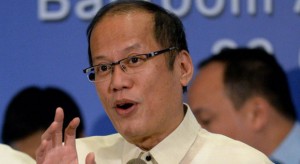Aquino to visit Zamboanga blast victims
MANILA, Philippines—President Benigno Aquino III will fly to Zamboanga City today to visit the victims of a deadly blast which security officials have linked to a recent attempt by the extremist Abu Sayyaf to rescue a jailed member, who is a brother of one of the group’s leaders.
The car bomb explosion, which occurred at a bar across the street from a busy bus terminal in the City, killed two people and wounded at least 54 others. One officer was among the wounded, police said.
Zamboanga police information officer Alex Mabalot said the blast killed a motorcycle taxi driver and another man who succumbed to his wounds. Only 10 people remained in hospitals, he said.
Regional police chief Edwin Basbas said investigators were looking for three men who were seen in the vicinity shortly before the blast.
While Malacañang would not comment on the motive for the attack, it said the objective was clearly to sow violence.
Article continues after this advertisement“Their motive is not clear yet but it is quite evident from their actions that, really, violence was their intent,” deputy presidential spokesperson Abigail Valte told state-run Radyo ng Bayan.
Article continues after this advertisementValte said that the President, who has received a “full report on the incident,” had given instructions for a thorough investigation to be conducted.
Investigation
The Philippine National Police (PNP) is leading the investigation with support from the military, she said.
Aside from comforting the wounded, the President is expected to be briefed on the security situation in the city, she said.
According to military sources, the blast was part of the Abu Sayyaf’s plan to spring from jail the brother of one of its leaders, Puruji Indama.
However, the attempt on Jan. 19 to get Bendar Indama out of the Zamboanga City Reformatory Center was foiled by security personnel. The ZCRC is about six kilometers from the site of Friday’s explosion.
Diversionary tactic
“The car bomb was designed as a diversionary tactic for the escape of (Bensar) Indama,” a well-placed military intelligence officer said on condition of anonymity for lack of authority to speak on the matter.
The source said the bomb was supposed to explode while Bensar Indama and other Abu Sayyaf members who were part of the group’s “special operations” were making good their escape.
Another military source said the incident may have been “part of a bigger plan which is still being investigated,” but declined to give more details.
Armed Forces of the Philippines (AFP) spokesperson Col. Restituto Padilla said the supposed link among recent incidents in Zamboanga City was among the angles being looked at.
The explosion occurred barely two days after Defense Secretary Voltaire Gazmin ordered the Western Mindanao Command to conduct “area target hardening” after the foiled rescue attempt.
Gazmin and AFP Chief of Staff Gen. Pio Catapang visited Zamboanga City on Wednesday to assess the security situation.
President Aquino earlier ordered a focused military operation to address the Abu Sayyaf threat and rescue their kidnap victims.
Improvised explosive
Zamboanga City Mayor Maria Isabelle Climaco-Salazar yesterday said she believed the Abu Sayyaf was behind the explosion and that the blast might have been a diversionary tactic.
Police and military authorities in the city said they were not certain the blast was caused by a car bomb. They said they were also looking into a gas tank or an improvised explosive device as the cause.
The theory about a car bomb came up after Senior Supt. Angelito Casimiro, the city police director, said police at the terminal saw a blue car parked near the bar catch fire just before the explosion, which occurred between 3:15 and 3:30 p.m.
“We still cannot say if it was a bomb,” Casimiro said.
No parking zone
Chief Insp. Mark Azur, the Divisoria police station chief, said an unidentified driver had tried to park the blue car as early as Thursday in front of the Guiwan bus terminal but was told the area was a no-parking zone.
On Friday, the same blue car caught fire and later exploded as it was parked in the middle of the Lobregat Highway, he said.
“There was a muffled sound of a blast, then smoke came out, later there was a strong blast,” Azur said.
But like Casimiro, Azur said it was too early to tell if it was a car bomb.
Supt. Ariel Huesca, the city police spokesperson, said the blast was so powerful that “shock waves were felt within a 1-km radius.” The shock waves were felt as far as Tetuan, Putik and Divisoria and the blast damaged establishments 500 meters from the center of the explosion, Huesca said.
“When it exploded, our responders saw many bloodied persons sprawled on the streets,” Huesca said.
Earlier this week, Army special forces killed at least three Abu Sayyaf gunmen in running gun battles and have continued to pursue the militants in nearby Basilan province. The group had previously set off bombs to divert attention from military operations.
The bar and the bus terminal had been separately hit several years ago by bomb blasts blamed on the Abu Sayyaf. At least two suspected militants were arrested in another bomb attack near a police station last month.
Friday’s explosion was the second to occur near the bus terminal. The first, on Oct. 9, 2011, injured occupants of the Red Palm Inn beside the terminal.
The 2011 blast was also as powerful, damaging many commercial establishments like bakeshops, pubs, banks and pharmacies, and public and private vehicles.
